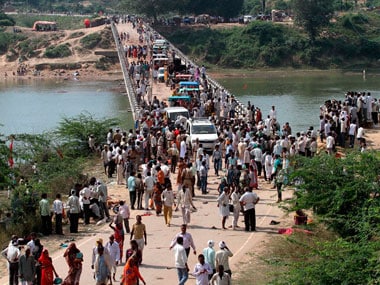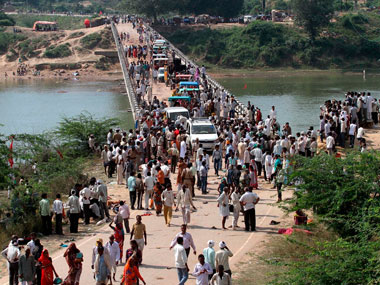A cyclone with wind speed of 200 km per hour hitting the thickly populated eastern coast claims 21 casualties and a stampede at a temple kills at least 111. How do you make sense of both the news pieces appearing side by side on newspaper pages? Even before you get a chance to savour one with some sense of victory and satisfaction – it is not often that India handles a natural calamity with such efficiency - the other one delivers the harsh sobering message that our disaster management skills are still inadequate to handle man-made calamities. Yes, you could call the temple tragedy in Datia district of Madhya Pradesh a man-made tragedy. It is a situation solely created and aggravated by human factors. [caption id=“attachment_1170463” align=“alignleft” width=“380”]  PTI[/caption] What is really tragic about the incident is the grim realization that we have learnt nothing from similar tragedies earlier. How many times have you heard of overcrowding at religious places across the country and how many times have you heard of a rumour driving devotees into a mad scramble in confined spaces? Jodhpur, Haridwar, Patna, Sabrimala Kunda, Himachal Pradesh, it has been same chain of events leading to the same tragic consequences every time. And we refuse to learn. It appears it is easier to manage a calamity caused by the forces of nature than one caused by people. Preparedness works. That is the big message from Odisha and Andhra Pradesh. The 1999 super cyclone caught everyone off guard, exposing the weakness of governments to respond quickly to a natural calamity of high magnitude. Alert to their own inadequacies, both the states and the centre have been preparing themselves well. The National Disaster Management Authority, which has grown with experience from different calamities across the country, was fortunately not a disaster this time. It has been busy training officials at ground levels on ways to handle the situations arising out of a calamity, and it helped. It helped that the much-maligned Indian Meteorological Department was accurate in its forecast of the cyclone, its course and extent. It allowed time for the administrations in both the states to react. Of course, the state governments played the biggest role on the ground. In the largest evacuation operation in the country, nine lakh people were shifted to cyclone centres in Odisha in just a couple of days. Getting a food supply network ready for them was no mean task. Of course, there was the challenge of cleaning up roads to facilitate access to affected areas immediately after the incident. The government managed exceedingly well. A committed officialdom surely can make a great deal of positive impact; it was on display in the state. Now coming back to the original theme, what went wrong in Datia? Again. it comes back to preparedness. The district administration never anticipated a stampede. It never felt that things could go horribly wrong if the crowd went out of control. The area around the bridge on which the tragedy unfolded was manned by only dozen policemen. When trouble erupted, they resorted to lathicharge, adding more confusion to the proceedings. Obviously, there was no arrangement in place to rescue people who fell into the Sindh river. Sunday’s tragedy was a repeat of a 2006 incident at the same location, when 50 devotees were swept away after falling into the river in spate. That makes the crime of the local administration unpardonable. It was unprepared. Curiously, the local administrations always are when it comes to religious gatherings. It is not easy to handle a crowd with no propensity to be disciplined and follow the rules. Also, narrow access routes to the shrines create their own problems. However, that exactly is the reason why the administration should be doubly prepared. It appears the Relief Commissioner of Odisha, PK Mohapatra, had sent out a terse communiqué to the officials at district levels and below before the cyclones. It said, the officials would be held accountable if there was a single human casualty from the cyclone. This seems to have worked. Why cannot officials of the local administration be issued similar warnings in case of religious gatherings? Fixing accountability would eventually lead to greater preparedness.
Preparedness works. That is the big message from Odisha and Andhra Pradesh and what should have been followed by authorities in the Ratnagarh temple.
Advertisement
End of Article


)

)
)
)
)
)
)
)
)



